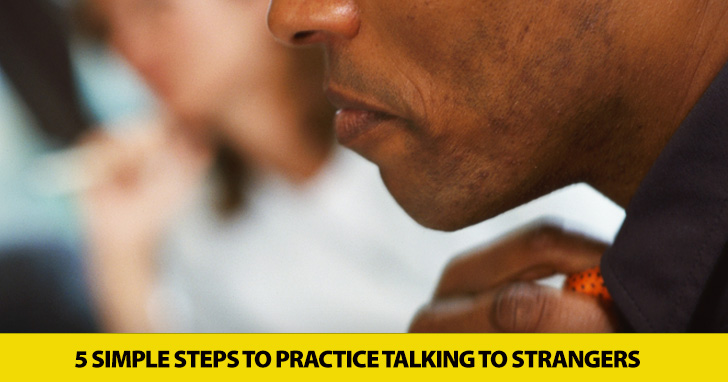Chit Chat and Small Talk: 5 Activities to Get the Conversation Started with Your Students


It doesn’t matter if English is your first language or not. Walking up to a person you have never met before is intimidating. But it’s a worthwhile habit, too. By talking to new people you may find friends, romantic partners, or a contact that could change your business life. But what do you tell ESL students who have to face language insecurity on top of the normal intimidations that come with talking to strangers? Tell them it’s easier than they think to talk to people they don’t know, and you won’t be lying. Then tell them these 5 steps which make striking up a conversation with a stranger practically simple.

While talking to people you do not know may be a good practice to practice, not everyone will be open to conversation. So it’s very important that students do not take it personally when someone does not seem interested in talking to them or ignores their attempts to talk. It’s not because of your students. With that said, many people are open to conversation, especially with someone from another country. A stranger on the street might love an opportunity to touch another part of the world via a conversation with an international. So encourage students to put their fears aside and be willing to greet someone. It may turn out to be the best thing they have ever done.
If your students are willing to talk to a stranger, their openness won’t help much if they don’t know how to start the conversation. Remember that there are some topics of conversation that are always good to bring up with a new person.
One thing for ESL students to avoid when talking to strangers is a canned dialogue. If they haven’t heard this term, it is basically a role-play that students have memorized. I cannot tell you how many times in my years teaching I have heard canned dialogue, and they aren’t engaging. People can spot memorized dialogues, and you should encourage your students to avoid them when talking to strangers. Another point to be aware of is body language. If the person they are talking to shows disinterested body language, it may be best to step back and find someone else to talk to. If they back away, put their arms up and across their chest, or avoid making eye contact, these are all signs that the person is in no mood to talk, and it is probably best to abandon the conversation.
If your students start trying to talk to strangers and they get a resounding cold shoulder, it will be easy for them to give up. But don’t let them! Part of being friendly and getting comfortable talking to strangers is to be persistent. Your students have to expect rejection, but they will also need to be determined to stick it out. Encourage your students to talk to at least one stranger each day. It takes at least twenty-one days to form a new habit, so set the challenge there. If a student says hi to a person on the street and gets no response, at least they made the attempt. If you like, make time in your class period for students to share their experiences striking up conversations with strangers. Knowing that their classmates are facing the same struggles in conversation might be comforting to them. And they might be encouraged by their classmates’ successes as well. Again, rejection is not personal. And the more your students practice starting up conversations, even if they do not get the response they want, the better off they will be and the easier it will be to do next time.
ESL students aren’t the only ones who do this, but internationals sometimes tend to stick together. It’s not unusual to see a large group of nonnative speakers out in social situations, just like you might with native speakers. That’s not a bad thing, but if your students’ goal is to talk to strangers, going out with a group is going to make it harder to approach people they do not know. Challenge your students to try going out on their own. Or if they go with another person, tell them to try and not talk to each other while they are at the event. If your students are adults, they can probably find a college party just about every weekend, but there are other places to talk to people you do not know. Good places to start conversations with strangers include going to museums, book clubs, art shows, and festivals. People attend these events to have fun, so it might even be easier to strike up a conversation with someone at one of these places than a stranger just walking down the street.
Striking up conversations with strangers isn’t going to come naturally to most people, ESL students included. If you help your students understand how to start a conversation, what to do and not do, and where to find people to talk to, you will be helping them in more ways than one. Not only will they get a chance to practice their English. They might also end up meeting someone who could be a friend for life. And we could all use a few more friends.
What strategies do you teach for starting up conversations?